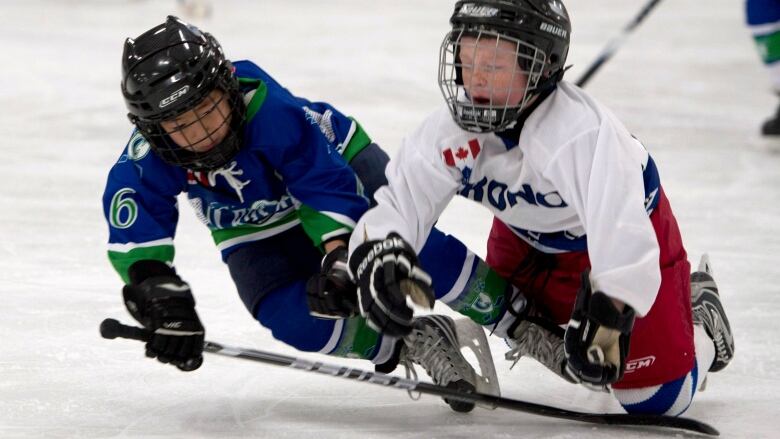Team sports give young children a boost in class
Behavioural payoffs from playing sports are undervalued in Canadian school systems, psychologist says

Children who playedstructured sports with a coach in kindergarten were better able to follow instructions and stay focused in the classroom when they reached fourth grade, Quebec researchers have found.
That's important, because students who are more engaged in class tend to work moreco-operatively, demonstrate more self-confidence, and follow directions and rules behaviours that get honed in childhood and adolescence and pay dividends into adulthood.
Researchers at theUniversity of Montreal and Sainte-Justine children's hospital followed 935 children born in Quebec between 1997 and 1998. Theyquestionedparents abouttime spent on physical activity including team sports, unstructured physical activity and other lessons such as music. Teachers rated students on measures such as classroom engagement, aggression and impulsivity.
- Preschoolers' playtime needs to be more active
- Physical inactivity of Canadian kids blamed on 'culture of convenience'
"What we found was really a beautiful result," said the study's senior author, Linda Pagani, a professor of psychoeducation at the University of Montreal. "Kindergarten involvement in structured physicalactivity was associated or predicted better participation in classrooms as far as being engaged and involved in fourth grade, which is really good because the kids mentally, they're online in the classroom."

The structured activities involvedpractisingmotor skills, such as learning to bat a ball, do hip hop choreography or engage in martial arts. Unlike a phys-ed class where children are told to run laps, in the structured classes, an instructor or coach guides all of the kids on where to place their arms and legs and concentrate on following the instructions and mastering a move.
"It's like Simon Says almost," Pagani said.
"Teachers who are teaching for physical activity are getting kids out there to move around for cardiovascular health but for brain health, I think we need to change our model a bit and have kids followinstructions that involve a sequence of different movements."
Pagani believes this mental component is undervalued in Canadian school systems. She saysthe best way to practise the concentration skills for reading comprehension, for instance, is for the brain to get its workout in othercontexts,such as on the sports field.
In the study published in Wednesday's issue of the American Journal of Public Health, more was better. Every time a child participatedin the structured activity, the level of class engagement, such as listening to the teacher, went up by six per cent.
While unstructured free play and activities such as music lessons may show physical and mental benefits in other ways, they didn't pay off in this study.
Learning more
Coaches have long recognized that when children learn team sports and do their skill drills, they're learning more than how to kick and pass.
"In teamsport, you have to show up on time, be ready and prepared," said Donald Mackey, director of the St. John's Soccer Club. "You work towards a certain objective as a team. That brings its challenges in communication."
Mackey, who is also a teacher, wasn't surprised by the findings. Mackey said he's able to pick out which students in his classroom arealso playing team sports.
In the study, researchers accounted forpre-existing influences that could have influenced the results, such as thechild'sphysical fitness and cognitive abilities,mother'seducation level, and how well the family generally functioned and communicated.
Pagani's team hopes the findings couldhelp schools and public health authorities to better reachchildren at risk for low physical activity to tackle obesity andschool drop-out rates.
"Make judicious choices," she advised parents of preschoolers on choosing sports.For unstructured activities,Pagani, a mother of three pre-teens and teens,suggested watching the activity before-hand to see if it's worth enrolling.
KatieGunnell, a junior research scientist at theHealthy Active Living and Obesity group at the Children's Hospital of Eastern Ontario in Ottawa, suggested parents talk to the children before enrolling in team sports.
"One strategy for promoting positive sport experiences that canincrease social connections and self-regulation skills is to provide the child with choices about which sport they might want to participate in," saidGunnell, who wasn't involved in the research.
The study was funded by the Social Sciences and Humanities Research Council of Canada.
With files from CBC's Amina Zafar and Vik Adhopia












_(720p).jpg)


 OFFICIAL HD MUSIC VIDEO.jpg)
.jpg)



























































































